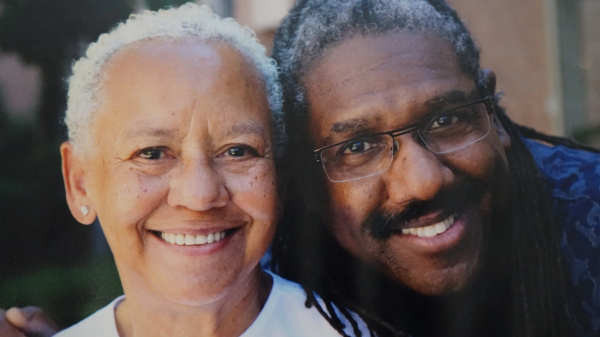Editor’s note: This story is featured in the 2023 year in review.
The Super Bowl is one of America’s most popular sporting events, garnering around 100 million live viewers each year. Its appeal goes beyond the field, with extravagant halftime shows and cinematic commercials, but it wasn’t always this grand.
This year’s game will be at State Farm Stadium in Glendale, Arizona, between the Kansas City Chiefs and the Philadelphia Eagles. It will be a game that is both tied to a long history and is historic in that it will be the first time in the National Football League’s history where two Black quarterbacks will start.
As the state of Arizona and the rest of the nation gear up for the big game, Victoria Jackson, clinical assistant professor of history at the School of Historical, Philosophical and Religious Studies and a renowned sports historian, answered our burning questions about the Super Bowl’s past, present and future.
Editor's note: Answers have been edited for length and clarity.
Question: Can you tell me a little bit about the first Super Bowl? What would people not recognize?

Victoria Jackson, clinical assistant professor of history.
Answer: This, believe it or not, is a trick question. Packers fans will tell you the first Super Bowl was in 1967 and won by Green Bay, and Jets fans will tell you that technically the first Super Bowl was in 1969. ... Yes, it wasn’t until the third meeting of the champions of the National Football League and the American Football League that the game was dubbed the Super Bowl, and following that game, the leagues merged and the former NFL and AFL became conferences within the NFL, the NFC and AFC.
So, yes, Green Bay, defeating Kansas City 35–10, won the retroactively named first Super Bowl. ... The game was played in the L.A. Memorial Coliseum, the iconic stadium that opened 100 years ago this year.
Q: What can you tell us about the other times the Super Bowl was hosted in Arizona, in 1996, 2007 and 2015?
A: Well, this year should have been the 30th anniversary of the time Arizona first hosted the Super Bowl, but it is not. ... The first Super Bowl in Arizona was planned for 1993 but did not happen until three years later, in 1996. Public and corporate pressure convinced NFL owners to vote in 1991 to relocate the 1993 game from Sun Devil Stadium to the Rose Bowl in Pasadena, California.
Why? Because Arizona voters had rejected Martin Luther King Jr. Day as a paid state holiday. Arizona had (already) had the holiday; Gov. Bruce Babbitt established it in Arizona with Executive Order 86-5 after President Ronald Reagan signed legislation making the day a national holiday in 1986. But when Evan Mecham became governor in 1987, he rescinded Babbitt’s executive order. Meachum was impeached the next year, and in 1989 the state legislature passed a law to adopt the holiday … pending voter approval. Then voters rejected the holiday.
But here’s what happened next. Losing the Super Bowl played a role in keeping the holiday on subsequent state ballots. And in 1992, Arizonans voted to adopt Martin Luther King Jr. Day.
NFL Commissioner Paul Tagliabue worked to broker a deal with then-Arizona Gov. Fife Symington, and Arizona did end up getting its first Super Bowl, though later than initially planned. Crucial to note here: The Super Bowl also got Arizonans Martin Luther King Jr. Day. This was not the first time interest convergence in football forced racial progress in the United States, nor would it be the last.
And, in a great coincidence of history, Arizona will now be hosting the first Super Bowl featuring two Black starting quarterbacks — Kansas City’s Patrick Mahomes ... and Jalen Hurts.
Q: How has the Super Bowl changed over the years?
A: The 1990s really was the period when the Super Bowl halftime show became the "Super Bowl Halftime Show" and the spectacle of celebrity musical performance expanded audiences beyond sports fans and made the Super Bowl a massive cultural phenomenon. ... The ads are the other piece that made the Super Bowl the spectacular event it is today. The iconic commercials that air during the Super Bowl? Apple deserves the credit for creating the genre of unexpected, cinematic Super Bowl commercials with the iconic “1984” ad introducing the MacIntosh computer. The commercial was a Chiat/Day concept and directed by Ridley Scott.
Of course the Super Bowl’s center remains the football game, but the ads and the halftime show have made the event super and spectacularly American. Just try not to be stuck outside of the U.S. on Super Bowl Sunday if you want to tune in and enjoy the full experience; the global feed does not include the ads.
Q: With so many safety concerns raised in recent years, do you see the game evolving?
A: I don’t think anyone could have predicted less than a decade ago when the NFL and the game of football faced an existential crisis over concussions and chronic traumatic encephalopathy (CTE) that the NFL would be enjoying the financial and popular success it enjoys today. The NFL enjoys the most valuable franchises, the greatest annual revenues, the biggest media rights deals and the most viewers who tune in. Concussions continue, but the concussion crisis was temporary, at least to the premier professional league of the sport.
Football is an inherently dangerous sport. The danger in football won’t go away. ... If you tune into a game of American football, you are accepting that you are watching athletes play a game that puts them at risk, and at a category of risk that sets this sport apart from most others. ... Concussions and sub-concussive hits, which some researchers believe may contribute to the development of CTE, are still part of the game, with strong protocols in place. ...
The greatest evolution in the game we have seen has been a transformation in the players, an expansion of what it means to be a football player and what it means to be a "manly" man. The expressions of concern, compassion and love for Damar Hamlin, and the Bills and Bengals together deciding to end the game after Hamlin’s heart had stopped, capture this new expansive embodying of football manliness among these young men. This is the evolution in the game worth celebrating.
Top photo by Juan Salamanca via Pexels.
More Arts, humanities and education

School of Social Transformation faculty member assumes new title with NSF
School of Social Transformation faculty member and Founding Executive Director of the Center for Gender Equity in Science and Technology (CGEST) Kimberly Scott is accepting a new position…

ASU's Neal Lester reflects on life, death of poet Nikki Giovanni
When Neal Lester heard on Monday that poet and activist Nikki Giovanni had died, the news hit hard.Lester, the founding director of Arizona State University’s Project Humanities and a Foundation…

Learning by stepping outside
By Adriana MaestasAmid a world increasingly captivated by all things digital, more than 200 Arizona teachers have crafted immersive educational experiences that nudge students to step away from their…
